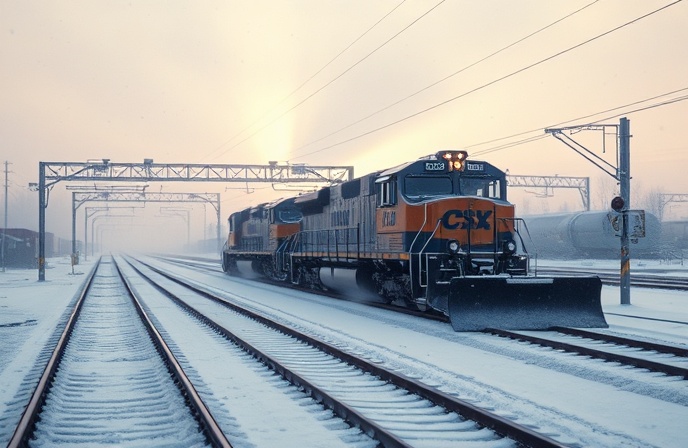TransPennine Express: Nova 1 Trains Arrive

This article explores the significant upgrade to the TransPennine Express (TPE) fleet with the introduction of the new Nova 1 trains, manufactured by Hitachi Rail and financed by Angel Trains. The arrival of these modern, high-capacity trains marks a pivotal moment for rail travel in the North of England and Scotland, promising to alleviate overcrowding and enhance the passenger experience. We will examine the technical specifications of the Nova 1 trains, the phased rollout plan, challenges encountered during the introduction of other Nova fleets (Nova 2 and Nova 3), and the overall impact of this fleet modernization on passenger capacity and the railway network. The analysis will delve into the operational aspects of integrating these new trains into the existing TPE network, highlighting the complexities of rolling stock introduction and the collaboration necessary between the train operator, manufacturer, and infrastructure providers. Finally, we will assess the broader implications of this project for future rail investments and improvements in regional connectivity.
Nova 1 Train Specifications and Delivery
The Nova 1 trains represent a substantial increase in passenger capacity for TPE. Each of the 19 five-carriage trains boasts 342 seats, a significant improvement over the existing rolling stock. This translates to 161 additional seats per train, significantly increasing the overall seating capacity on the Manchester-Edinburgh route. The trains incorporate modern amenities, including comfortable seating, free Wi-Fi in both first and standard class, plug sockets, and USB charging points, enhancing passenger comfort and productivity during their journeys. The successful delivery of the first Nova 1 train, following formal acceptance by the Office of Rail and Road (ORR), signifies a key milestone in the project’s timeline.
Phased Rollout and Operational Challenges
The introduction of the Nova 1 fleet is a phased process, aiming for complete integration by the end of the year. This staged approach allows for thorough testing and minimizes disruption to existing services. However, the experience with the Nova 3 trains, manufactured by Construcciones y Auxiliar de Ferrocarriles (CAF), highlights potential challenges. The discovery of faults delayed the entry into service of the first Nova 3 train until the end of summer, underscoring the importance of rigorous testing and collaboration between the manufacturer and the operator to resolve any technical issues before full-scale deployment. This experience provides valuable lessons for the ongoing integration of the Nova 2 fleet and future fleet upgrades.
Increased Capacity and Network Impact
The combined effect of the Nova 1, Nova 2, and Nova 3 fleets is projected to provide an additional 13 million seats annually. This dramatic increase in capacity addresses a crucial need on the busy TransPennine network, improving punctuality and reducing overcrowding. The expanded seating availability will benefit commuters and leisure travelers alike, facilitating greater mobility and connectivity across the North of England and into Scotland. The positive impact on regional economic growth through improved transportation options is substantial.
Collaboration and Future Rail Investment
The successful introduction of the Nova 1 trains is a testament to the effective collaboration between TPE, Hitachi Rail, Angel Trains, and the ORR. This collaborative approach, characterized by open communication and problem-solving, is critical for the timely and efficient implementation of large-scale rail projects. The experiences with the Nova 3 fleet highlight the importance of proactive problem-solving and robust testing throughout the manufacturing and integration phases. The success of this project provides a valuable model for future rail infrastructure upgrades and modernization initiatives, promoting investment in high-capacity, passenger-centric rail services.
Conclusion
The arrival of the Nova 1 trains marks a significant step forward for rail travel in Northern England and Scotland. The increased capacity, improved passenger amenities, and the overall enhancement of the traveling experience represent a substantial improvement for commuters and leisure travelers alike. The phased rollout strategy, while presenting challenges as seen with the Nova 3 fleet, allows for iterative improvements and the mitigation of potential operational disruptions. The collaborative effort between TPE, Hitachi Rail, Angel Trains, and regulatory bodies demonstrates the importance of partnership in delivering complex rail infrastructure projects. The successful integration of these new trains not only promises improved service but also sets a precedent for future investment and modernization in the rail network. The 13 million additional seats annually represent a transformative shift in regional connectivity, contributing to economic growth and enhancing the quality of life for millions of people. The lessons learned from the initial challenges faced with the Nova 3 trains will undoubtedly inform future fleet upgrades, leading to even more efficient and passenger-friendly rail services. This project sets a compelling example of how effective collaboration and strategic planning can deliver significant improvements in public transportation, demonstrating the transformative potential of rail investment in enhancing regional connectivity and economic development.



